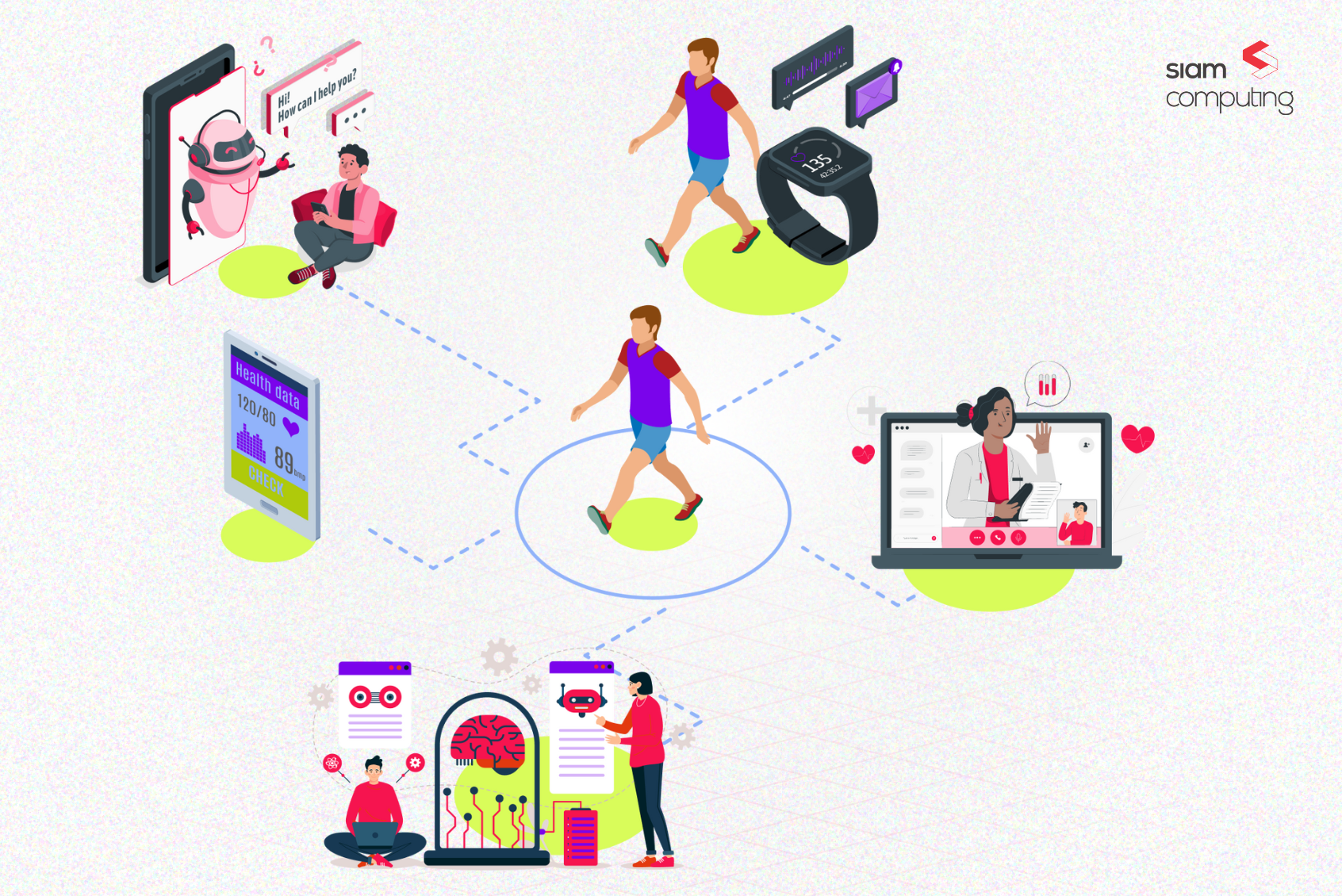In the tumultuous seas of economic downturns, businesses find themselves at a crossroads. Recessionary environments such as the one we are facing today, trigger a reflex for many businesses to tighten belts and trim expenses wherever possible. Historically, this has translated into across-the-board cost-cutting measures, with digital product development taking a hit.
The short-term gains of reducing immediate expenditures may seem appealing, but one must be wary of the long-term repercussions of putting digital innovation on the backburner.
As the global economy continues to grapple with uncertainties, the question becomes more pressing than ever: Should businesses pause or persist in digital product development during a recession?
Cost-Cutting Dilemma – Lessons from the Past
A Harvard Business Review study, “Roaring Out of Recession” by Ranjay Gulati, Nitin Nohria, and Franz Wohlgezogen, analyzed the performance of 4,700 companies across three recessionary periods. The study found that companies that invested in innovation during tough times experienced higher revenue growth and market share gains than their peers.
Conversely, companies that reduced spending on development saw lower revenue growth and market share gains. One stark illustration of this is Sony, which cut its workforce by 11%, its R&D expenditures by 12%, and its capital expenditures by 23% during the economic downturn in 2000. The cuts helped Sony increase its profit margin from 8% in 1999 to 12% in 2002, but growth in its sales tumbled from an average of 11% in the three years before the recession to 1% thereafter.
In fact, Sony has struggled since then to regain momentum and finds itself bested by Amazon, Microsoft, Samsung, and many younger companies in products where they almost had no competition. Sony’s decision to cut down on innovation and adaptability contributed significantly to its diminished market share and relevance.
The Case for Continuing Digital Product Development
Amidst economic uncertainties, there may be a compelling argument for businesses to resist the urge to hibernate their digital product development efforts. However, the digital landscape is dynamic, and consumer needs evolve rapidly. Maintaining an active presence in the development sphere ensures a business remains adaptable to these changes.
To drive home the point, let’s turn our attention to real-world success stories. Companies that chose not to hit the pause button on digital product development during recessions and instead, increased their investments in innovation to reap substantial rewards.
Examples of companies that successfully innovated during financial downturns include:
1. Salesforce
During the 2008 financial crisis, Salesforce, a cloud-based software company specializing in customer relationship management (CRM), took a bold stance by continuing its investment in digital product development. Rather than scaling back, Salesforce accelerated its innovation efforts and introduced several key features and products during this period.
Salesforce recognized the increasing need for businesses to optimize their customer relationships and adapt to the changing economic landscape. The company enhanced its CRM platform, introducing new tools for sales automation, customer service, and marketing. One notable addition was the introduction of Chatter, a collaboration platform that allowed teams to communicate and collaborate within the CRM environment.
By innovating during a challenging economic climate, Salesforce not only retained its customer base but also attracted new clients looking for advanced solutions to navigate the complexities of the recession.
2. Flipkart
During the economic downturn of 2020, induced by the global COVID-19 pandemic, Flipkart, one of India’s leading e-commerce platforms, demonstrated resilience and innovation in its digital product development strategy.
Recognizing the surge in demand for online shopping as people stayed home due to lockdowns, Flipkart strategically expanded its product offerings and enhanced its platform capabilities. The company accelerated the development of features that facilitated contactless delivery, improved user experience, and increased the efficiency of its supply chain.
The result of Flipkart’s strategic digital product development approach during the recessionary period was evident in its sustained market leadership and increased customer trust. By adapting to the changing dynamics of consumer behavior and leveraging digital innovation, Flipkart not only weathered the economic challenges but also positioned itself for future growth.
3. Zoho Corp
Zoho Corporation is one of India’s biggest SaaS companies and stands today as a true north star for Indian product companies. Back in 1996, Zoho started its journey as AdventNet, selling software to network equipment vendors. By 1999-2000, there was a raging bubble in networking and telecom. When the bubble burst in 2000 and the world was gripped in recession, its founder and CEO took a strategic approach to digital product development and launched Zoho.
Amidst the recession, Zoho continued to invest in expanding its suite of online productivity tools, customer relationship management (CRM) software, and other business applications. The company recognized the growing demand for cost-effective yet powerful solutions as businesses sought to optimize their operations in a challenging economic environment.
If not for the 2000 dot com bubble, Advent Network Management (AdventNet) wouldn’t have transformed itself into a global IT product company with more than 100 million users (Zoho). Zoho’s strategic decision to persist with digital product development during the recession allowed the company to strengthen its market presence and foster customer loyalty. The emphasis on creating solutions that cater to the evolving needs of businesses underscored Zoho’s commitment to long-term growth.
Unlocking Growth: Investing in Product Development During Recessionary Times
In navigating the seas of economic downturns, the question of whether to pause your digital product development or set sail for innovation becomes paramount. Salesforce, Flipkart, and Zoho were all baptized by fire during massive economic meltdowns, and they continue to dominate their markets today due to a continued attitude to reinvent themselves and innovate.
Taking a lead from these giants, let’s delve into the critical reasons why embracing continuous product development is not just a lifeline, but a strategy for long-term success, especially during a recession.
1. Anticipating and Meeting Evolving Needs
In recessionary environments, consumer behaviors shift swiftly. Continuous product development ensures that your offerings align with the dynamic needs of your target audience. This adaptability is not just about surviving; it’s about thriving by staying relevant.
2. Navigating Economic Shifts with Agility
Recessions usher in economic shifts that can catch businesses off guard. Those actively engaged in continuous product development can pivot swiftly, identifying emerging trends and positioning themselves strategically in response to these shifts.
3. Building Customer Trust and Loyalty
Trust is invaluable, especially in tough economic times. By consistently innovating and enhancing your products, you signal to your customers that you are committed to their success. This builds not just loyalty but a lasting relationship that extends beyond economic uncertainties.
4. Seizing Unexplored Market Opportunities
Economic downturns create voids and unmet needs in the market. Continuous product development allows you to spot these opportunities and capitalize on them, gaining a competitive advantage over those who choose to scale back their innovation efforts.
5. Long-Term Vision Amidst Short-Term Challenges
Balancing short-term survival with long-term vision is the hallmark of successful businesses. Continuous product development is not just about the here and now; it’s about laying the groundwork for sustained growth, ensuring your business emerges stronger on the other side of a recession.
Product Development Trends That Are Driving Change Today
Now, let’s paint the picture of how cutting-edge technologies and product development trends can be the brushstrokes for innovation during a recession.
1. AI and ML
Whether you’re in healthcare, finance, or e-commerce, AI and ML enable businesses to analyze vast amounts of data, derive valuable insights, and make data-driven decisions. In product development, these technologies contribute to personalized user experiences, predictive analytics, and automation of various processes. A GenAI chatbot especially is a great way to get started and it serves as a versatile tool for understanding and serving your audience better.
2. IoT Solutions
IoT solutions can be utilized for creating smart, interconnected products. This includes everything from wearable devices to smart home appliances, offering new possibilities for innovation and functionality. Manufacturing, logistics, or healthcare – IoT transforms operations and how you deliver services. From smart manufacturing to remote patient monitoring, IoT is the bridge that connects your products to efficiency and innovation.
3. DevOps and Agile Development
Embracing DevOps and Agile methodologies ensures a streamlined and efficient product development process. Breaking down traditional silos between development and operations teams, these approaches allow for faster iterations, quicker response to market changes, and improved collaboration. During a recession, where adaptability is key, DevOps and Agile practices become invaluable assets in maintaining a nimble development cycle.
4. Outsourcing Wisely
Leveraging external expertise through outsourced product development can be a strategic move during challenging economic times. Outsourcing allows businesses to access specialized skills without the burden of maintaining a large in-house tech team. This cost-effective approach ensures that product development continues at pace, even with a leaner budget. It’s a proven strategy for optimizing resources and maintaining innovation momentum.
5. Leveraging Existing Technologies (Building on Top of Legacy Systems):
Rather than starting from scratch, building upon existing technologies and legacy systems can be a pragmatic approach. This not only maximizes the value of previous investments but also accelerates development timelines. Integrating modern functionalities into established systems ensures a seamless transition into the digital future. This approach is particularly relevant during economic uncertainties, offering a balance between innovation and resource optimization.
Navigating the Waters of Innovation During a Recession
The verdict on whether to pause or persist in digital product development is far from unanimous. The dilemma boils down to a delicate balance. While the traditional approach of cost cuttings may offer a semblance of financial relief in the short term, the long-term consequences of stagnation in innovation are not to be underestimated.
As businesses grapple with this dilemma, it’s essential to assess the unique context of each organization. Consider your industry, customer base, and long-term goals. Engage in a thoughtful examination of the risks and benefits, keeping in mind that strategic decisions during challenging times can set the course for future success.
With this exploration, we at Siam Computing invite businesses to question convention, challenge the status quo, and chart a course that digitally aligns with your aspirations as well as your users or customers, even when economic winds blow uncertainly. Talk to our product strategists to uncover tailored solutions that resonate with your specific needs and challenges.
The ship of innovation may encounter turbulent seas, but it is precisely in those moments that new horizons are discovered. Take charge of your course and let’s sail into the future together.








